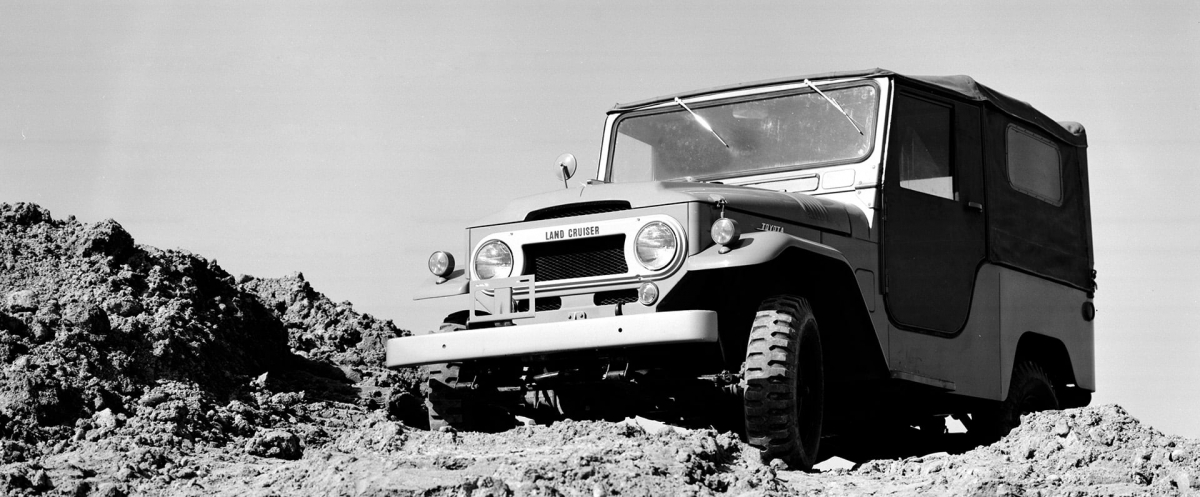The history of the Toyota Land Cruiser begins in the early days of the Korean War, when American forces occupying Japan required additional heavy-duty vehicles to supplement their existing Jeeps as they moved into the Korean peninsula. Attempting to win the contract, Toyota created a prototype known as the “Toyota Jeep BJ.”
The Americans went with a different design, but Toyota refused to give up on their new vehicle. The Jeep BJ proved itself when one was able to climb to the Number 6 checkpoint on Mount Fuji, higher than any land vehicle had ever gone.
In 1955, the Jeep BJ was renamed “Land Cruiser,” and a legend was born. In the years since, the Land Cruiser has proven itself not just in high-altitude challenges, but in sand, snow, swamps, and virtually every condition imaginable. Land Cruisers are the vehicle of choice in many remote and forbidding areas of the world, including the Australian Outback.
The early Land Cruiser had a very simple design, and subsequent versions became bigger, tougher, and had room for more passengers. 1967 saw the launch of a parallel product line, known as the Land Cruiser station wagon line. A third line, the Prado line, appeared in 1990. Even with multiple design changes and unique, temporary designs appearing over the years, the Land Cruiser has maintained a singular identity and a reputation for being capable of tackling any terrain on earth.


